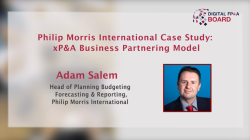In the current highly uncertain business environment, an xP&A business partner needs to be equipped with defined skills and competencies that bridge technical acumen, technology, and influence.
By gaining a deep understanding of the key performance drivers outside of finance, and by expanding its field of prescriptive action into all functions across the enterprise, FP&A can move the next level up and transform itself into an extended Finance & Analysis (xP&A) organisation. This article explores why many of us still think in silos and reasons why traditional business controlling should evolve into extended planning and analysis (xP&A).
It’s often been said that we’re in the agile phase of strategic thinking – the stage of strategic thought that focuses on flexibility in planning and rapid, quickly responding iterations - and it really can’t be emphasised enough just how important it is to build a responsive and agile FP&A strategy. It makes all the difference between an efficient and high-performing strategy and one that’s dead in the dust.
Does your organization’s strategy seem like a mystery or carefully guarded secret? Can it feel as if people's daily work doesn't relate to the direction where your business wants to go? Are people unable to access and understand your corporate goals easily? If you answered "Yes" to any of these scenarios, chances are that your organization is not as connected as it needs to be.
xP&A is extended planning and analysis, a term coined by Gartner to explain the technology that allows distributed inputs from the business units, algorithms and edge systems directly into the planning function. Information is dispersed, requiring a different set of skills to integrate the information. Here are five ways you can apply the structure of integrative intelligence to your xP&A process.
At a time when the FP&A framework is being extended to the entire organisation (into Extended Planning & Analysis (xP&A)), FP&A Business Partnering need to keep up with this new model to stay relevant and cutting edge. xP&A Business Partnering is now the latest trend that is going well beyond just Finance involving the entire organisation to move FP&A and planning to the next level.
Pagination
Subscribe to
FP&A Trends Digest

We will regularly update you on the latest trends and developments in FP&A. Take the opportunity to have articles written by finance thought leaders delivered directly to your inbox; watch compelling webinars; connect with like-minded professionals; and become a part of our global community.







